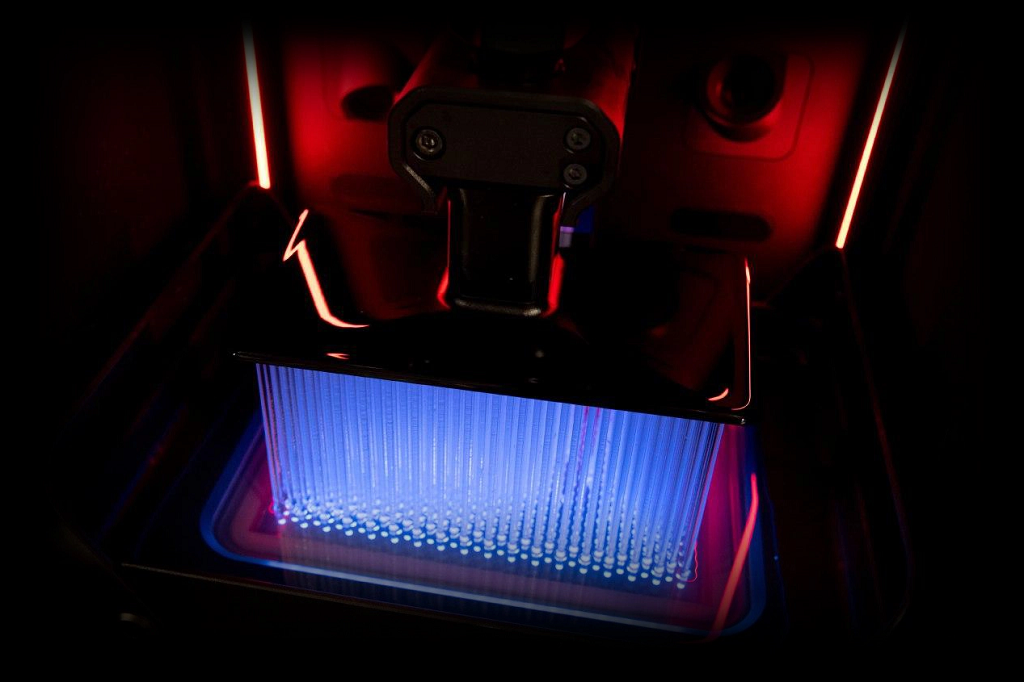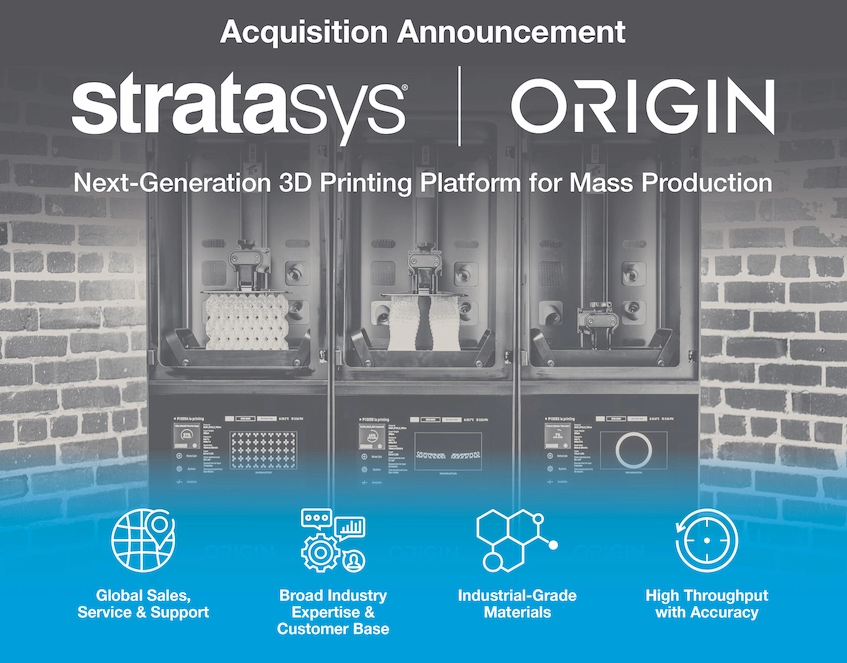
As anticipated, today it’s official: Origin is a Stratasys company following the close of the latest major 3D printing acquisition.
The $100M acquisition was announced last month. Stratasys framed the move as one that would accelerate their expansion into mass production-focused additive manufacturing. This goal, as it happens, fit quite neatly into the original Origin model.
“We founded Origin to create a whole new additive manufacturing platform that enables mass production of end-use parts with incredible accuracy, consistency, and throughput along with a wide range of available materials. Stratasys is the best company for us to join to achieve our vision, giving us an unparalleled opportunity to significantly expand market reach and enable us to bring our P3 technology to a larger audience,” Origin CEO and Co-Founder Christopher Prucha said upon last month’s announcement.
We took a look at the background of Origin’s 3D printing technology and its new parent’s strategy in our coverage last month of the Stratasys / Origin acquisition announcement.
Those strategies are now set in full motion. Today Stratasys has announced that, effective as of the last day of 2020, the acquisition has been completed.
Stratasys x Origin
Important to note are a few aspects:
- Origin is maintaining its team and San Francisco facility
- Origin is maintaining its open materials partnerships, including with BASF, DSM, and Henkel
That latter point had certainly been a major question mark for many in the 3D printing industry when this move was announced. Stratasys is famously a proprietary materials company. This included imposing that philosophy on the previously open source MakerBot upon that significant acquisition way-back-when in 2013.
There’s no reason to suspect that that’s why Origin initially said “no” when approached for a Stratasys acquisition. But that rather different historical take may not have been a null factor in the consideration.
Indeed, a point in this acquisition’s favor came into play earlier in 2020. Stratasys and Origin partnered up in April to scale up the 3D printing of nasopharyngeal testing swabs. The deal then was that Stratasys would “market and promote” the 3D printed swabs from Origin, as that company scaled up to make more than a million of the much-needed testing devices weekly.
“We have tremendous confidence in Origin’s 3D printing technology, and we’re confident in our ability to help bring them to market efficiently,” Stratasys Americas President Rich Garrity said at that time.
What became clear through that partnership was the reliance on one another’s resources. Stratasys, as one of the original and still largest players in the 3D printing industry, has a massive network and marketing machine. Origin, a software-focused startup with manufacturing-scalable Programmable PhotoPolymerization (P3) technology, has the ability to 3D print on a production scale. Together, these capabilities came together to get necessary testing supplies a) made well and b) disseminated well.
3D Printing Acquisition Strategy

Neither of those capabilities alone is enough for a successful solution. Something made well is great; but if no one knows about it or how to get it, it can die in the water. Likewise, a major network is hard to leverage when there’s no product to get into the world. Together, though, a full and scalable solution arises.
And now, that solution is a fully integrated one. Origin’s technology is Stratasys’; Stratasys’ network is Origin’s.
The focus is off testing equipment specifically and now is a full reach for production-oriented polymer additive manufacturing.
“The completion of this acquisition marks an important milestone for Stratasys, positioning us to generate meaningful incremental revenue from a wide range of new market opportunities for mass production,” said Stratasys CEO Yoav Zeif. “I’m confident that Origin’s innovative solutions will be a key contributor to strong company growth beginning in 2021 and help us further realize our strategic goal to fortify our leadership position as the ‘first choice’ for polymer 3D printing.”
Polymer Additive Manufacturing Leadership
That intentional step toward polymer production leadership is one that is remaining consistent. Indeed, Zeif told Forbes:
“Now we have a very focused strategy—polymers, production and manufacturing—and we don’t do anything except this.”
No mention of Stratasys’ planned metal moves has popped up specifically lately. Indeed, that sentence nearly removes the mere thought of metal from our minds. In the December announcement, Zeif did highlight a forthcoming step in powder bed fusion, but technically that could also mean either polymer or metal. All focus lately seems squarely on polymer technologies. And, especially with this acquisition, more of them. Stratasys now offers its original FDM along with PolyJet, SLA, and now P3 photopolymerization.
With the Origin acquisition closed, we could be entering a new growth era for Stratasys. Certainly the company expects to see revenues from the move. They underscored this in today’s announcement, which states:
“As previously indicated on December 9, 2020, the impact of the acquisition on Stratasys’ diluted non-GAAP earnings per share is expected to accelerate the company’s growth rate and be slightly dilutive to non-GAAP earnings per share in 2021, and accretive to non-GAAP earnings per share by 2023.”
Via Stratasys
